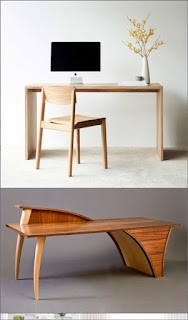Constructing a Child-Friendly Wooden Showcase with Integrated Drawers and Shelves
This comprehensive guide details the process of building a sturdy and aesthetically pleasing wooden showcase designed for children's storage. The project incorporates both drawers and shelves to provide versatile storage options for toys, books, and other belongings. Careful attention is paid to safety considerations, ensuring a child-safe design throughout the construction process.
Phase 1: Planning and Material Selection
Before commencing construction, meticulous planning is crucial for a successful outcome. This phase involves determining the overall dimensions, selecting appropriate materials, and procuring necessary tools.
1.1 Defining Dimensions and Design
The first step involves determining the desired dimensions of the showcase. Consider the available space, the amount of storage required, and the age and height of the child(ren) for whom it is intended. A detailed sketch or blueprint is highly recommended. This blueprint should clearly indicate the dimensions of the showcase, the number and size of drawers, the number and spacing of shelves, and the overall design aesthetic. Consider incorporating decorative elements such as rounded corners for enhanced safety.
1.2 Material Selection
The choice of wood significantly impacts the showcase's durability, aesthetics, and safety. Solid hardwoods like maple, oak, or cherry offer exceptional strength and longevity but are generally more expensive. Plywood provides a cost-effective alternative while maintaining adequate strength and stability. Choose plywood with a high-quality veneer for a pleasing appearance. Ensure the chosen wood is sustainably sourced and finished with child-safe, non-toxic paints or stains.
Hardware Selection: Select durable and child-safe hardware, including drawer slides, handles, and hinges. Consider using soft-close drawer slides to prevent accidental slamming and potential injuries. Opt for rounded handles to minimize sharp edges and potential hazards. Ensure all hardware is securely fastened to prevent detachment.
1.3 Tool Acquisition
Gather the necessary tools before starting the construction process. A comprehensive list includes:
- Measuring tape
- Pencil
- Circular saw or hand saw
- Jigsaw
- Drill with various drill bits
- Screwdriver (both Phillips and flathead)
- Safety glasses
- Dust mask
- Clamps
- Sandpaper (various grits)
- Wood glue
- Wood filler
- Paint or stain (child-safe)
- Brushes or rollers
Phase 2: Construction of the Showcase
This phase involves the actual construction of the showcase, following the pre-planned design and dimensions.
2.1 Building the Carcass
Begin by constructing the main body of the showcase, also known as the carcass. This usually involves cutting the sides, top, bottom, and back panels to the specified dimensions. Use wood glue and screws to securely join the pieces, ensuring square corners and tight joints. Clamps are essential to maintain alignment during the gluing and screwing process. After assembly, fill any gaps or imperfections with wood filler and sand smooth.
2.2 Drawer Construction
The drawers should be constructed from sturdy wood, using rabbet joints or dadoes for strength and durability. The drawer fronts should be carefully cut and attached to the drawer boxes. Install the drawer slides according to the manufacturer's instructions, ensuring smooth and easy operation. Attach the chosen handles to the drawer fronts. Remember to consider child safety and opt for soft-close mechanisms and rounded handles.
2.3 Shelf Installation
Cut the shelves to the desired dimensions and securely attach them to the inside of the showcase using shelf supports or brackets. Ensure that the shelves are evenly spaced and securely fastened to prevent sagging under the weight of stored items. Consider using adjustable shelf supports for greater flexibility in arranging storage space.
2.4 Back Panel Attachment
Attach the back panel to the showcase carcass. Plywood is a common choice for the back panel due to its affordability and ease of use. Use wood glue and brads or finishing nails to securely attach the back panel. Ensure that the back panel is flush with the edges of the showcase.
Phase 3: Finishing and Safety Considerations
This phase focuses on the final touches, ensuring both aesthetic appeal and safety for children.
3.1 Surface Preparation and Finishing
Sand all surfaces of the showcase thoroughly, starting with coarser grit sandpaper and gradually moving to finer grits to achieve a smooth finish. Apply wood filler to any remaining imperfections and sand again. Apply a child-safe paint or stain, following the manufacturer’s instructions. Multiple coats may be necessary to achieve the desired color and protection. Allow ample drying time between coats.
3.2 Safety Checks
Before allowing children to use the showcase, conduct a thorough safety check. Ensure that all screws are securely fastened, all sharp edges are rounded or covered, and all hardware is securely attached. Check for any splinters or rough spots and sand them smooth. Verify that the drawers operate smoothly and close securely. Ensure that the showcase is stable and will not easily tip over.
3.3 Optional Additions
Consider adding additional safety features such as corner protectors to further mitigate the risk of injury. You might also incorporate decorative elements such as stencils, decals, or painted designs to enhance the showcase's visual appeal.
Phase 4: Final Inspection and Placement
The final phase involves a comprehensive inspection and careful placement of the completed showcase. Ensure the showcase is placed in a suitable location, away from potential hazards and easily accessible to the children.
This detailed guide provides a comprehensive overview of constructing a wooden showcase with drawers and shelves. Remember to prioritize safety throughout the entire process and to use appropriate safety equipment. Enjoy the satisfaction of crafting a beautiful and functional storage solution for your children.
















